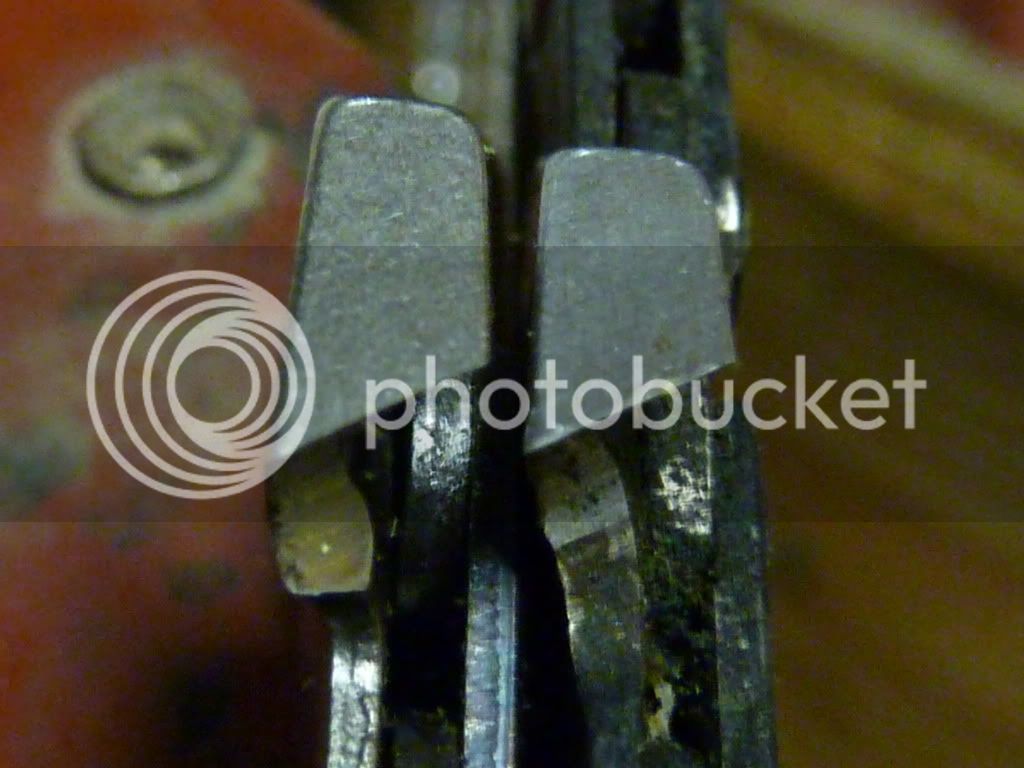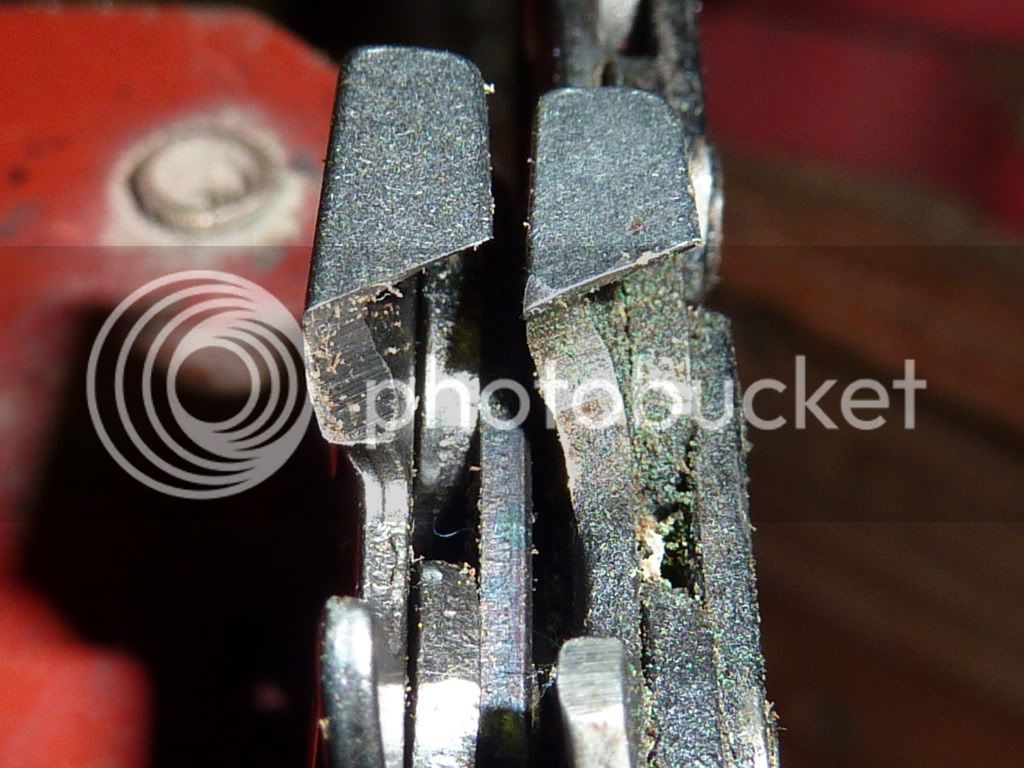just read this thread wow lol
Strange shape on the back side of those cutter teeth.
My grinder needs to be nudged just a bit toward the cutter tooth after it enters the cut or it just pushes away from the tooth and causes the rounded edge on the top of the cutter teeth. It's got some slop in the arm so it wants to ride around the top cutter when it goes down. Leaves a nice sharp edge on the side and a ####ty rounded one on the top.
Heat of any kind will defiantly harden those teeth. I sent one chain (first and last) to the shop and it came back blue toothed and killed a brand new file after ten teeth and it seemed really hard to file. I smoked a few myself

when I bought a old used grinder the next week to do it right myself. I was going into the grind way too fast. I could not sharpen the blued ones in the field with a file.
I should know this after building enough rear ends in cars and trucks. If you ever get one all worn down on the pinion teeth check the hardness rating on the pinion shaft and you will find that it was not 3 or 4 points harder than the ring gear. Bad move on the manufactures part there :eek2: . So heat hardens steel, no dought. Harder steel chews up softer stuff every time. That's why they make carbide steel cutters.
If your ripping with this chain down the end grain of the wood it will kill a cutter fast at 30 degrees angle.
The chain may also be getting some millings thrown at it from the links, they are softer than the bar and being forced into the wood will chew the bottom of the chain down quick. It will chew the chain down and run the millings right back up through the cutter teeth. I can clearly see that the chain is worn down on the rail side of the links. Add some oil to them and you have the perfect environment for milling or honing down the cutting edge on the top of the teeth. High speed, friction and hard steel is not a good mix.
I have also noticed the chrome plating on the cutter teeth is chipped. I did that way back when and found out it was caused by the little bits of steel chipping off the edges

of the bar where it needs to be dressed as mentioned by some in this thread.
Add all that up and it seems to be a recipe for a quickly dulled chain IMO. Just my 2.5 cents here so, take it for what is worth

otstir: or not.
Good Luck










 of the bar where it needs to be dressed as mentioned by some in this thread.
of the bar where it needs to be dressed as mentioned by some in this thread.